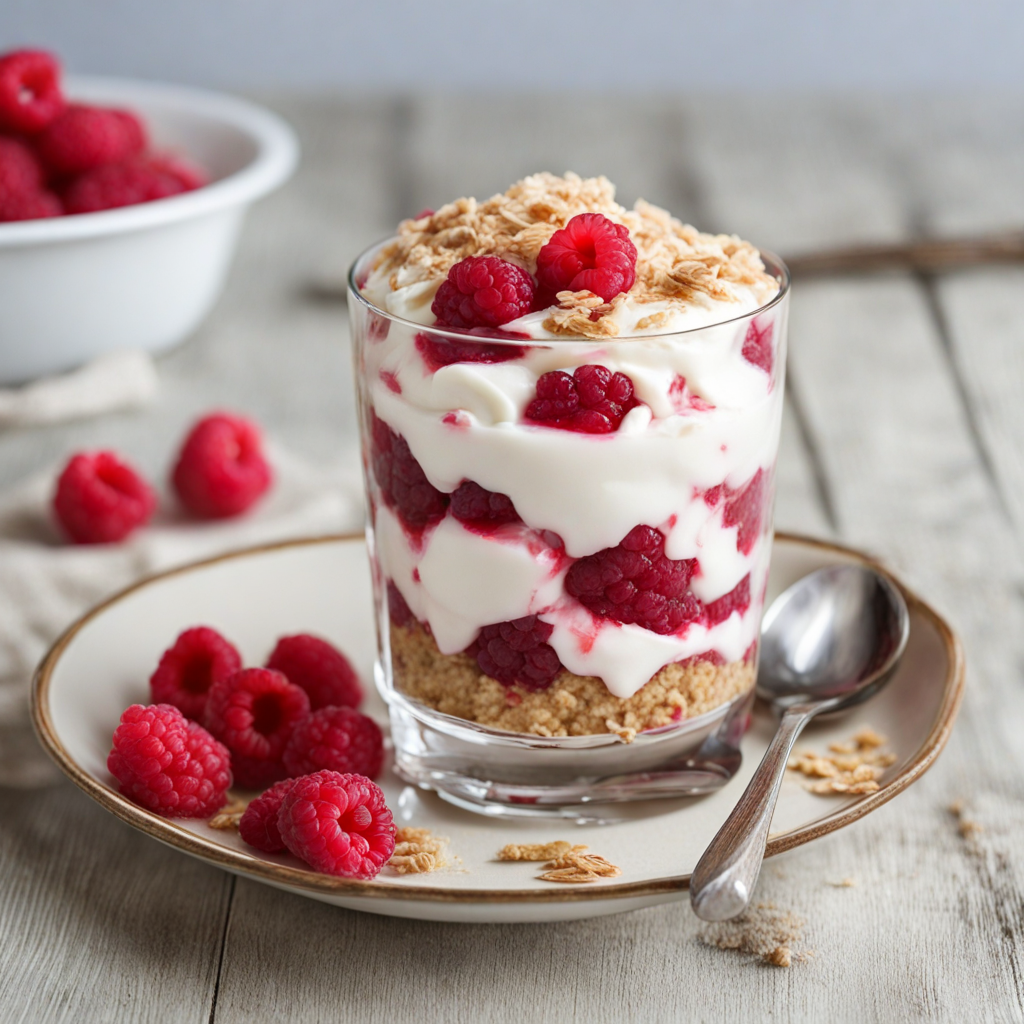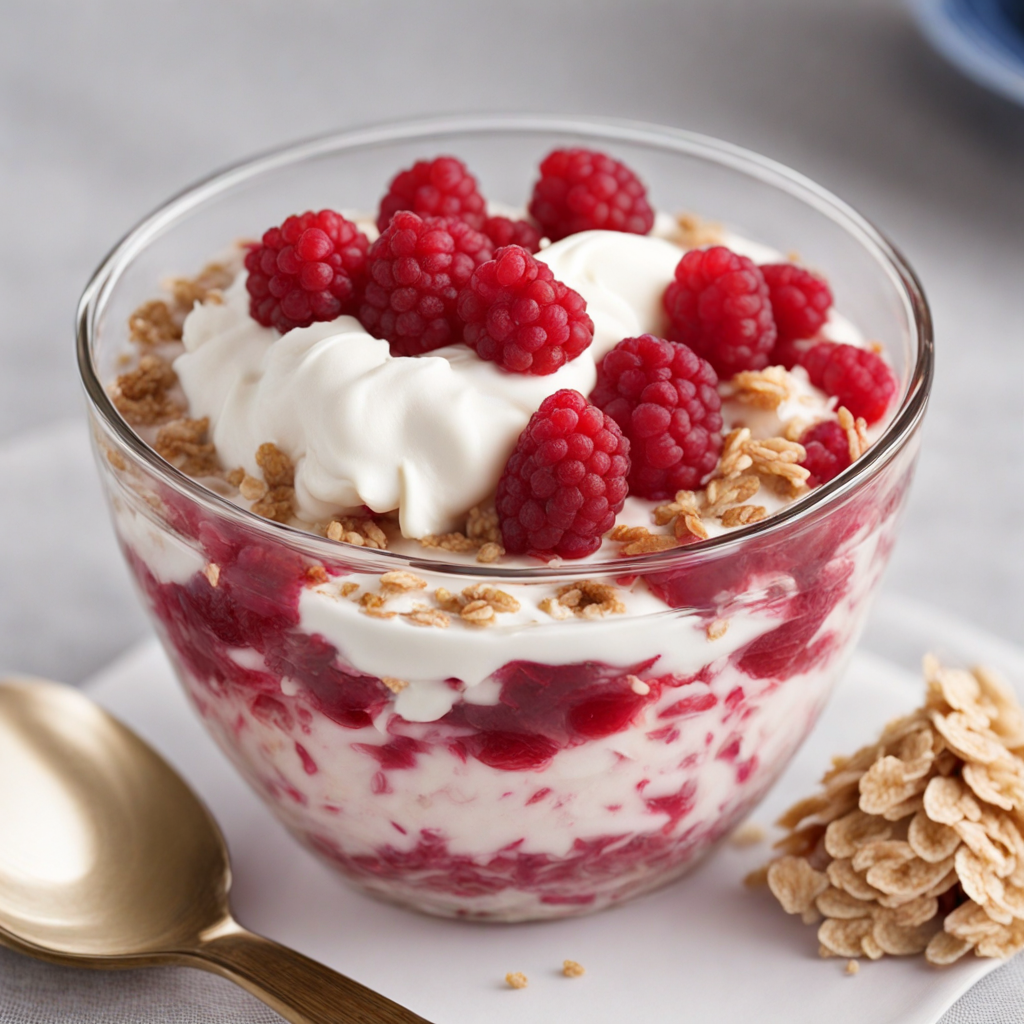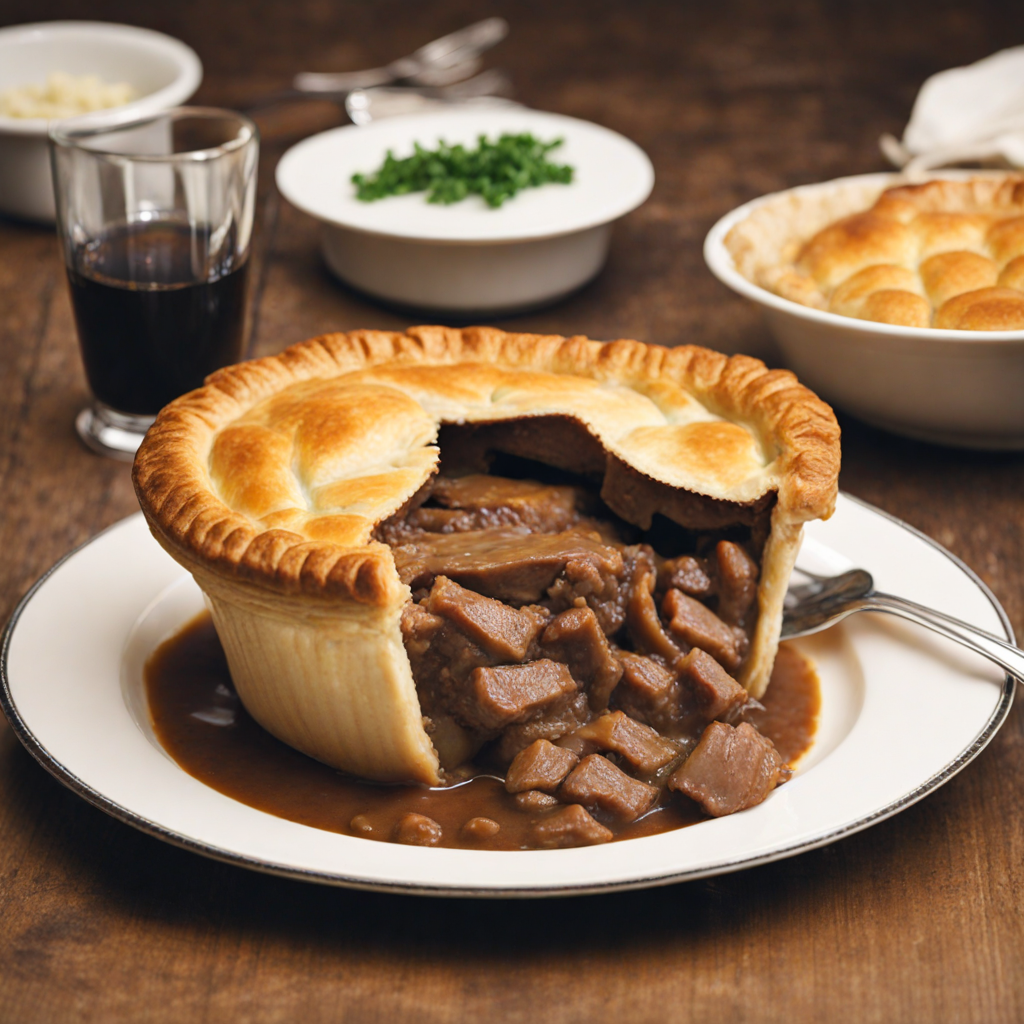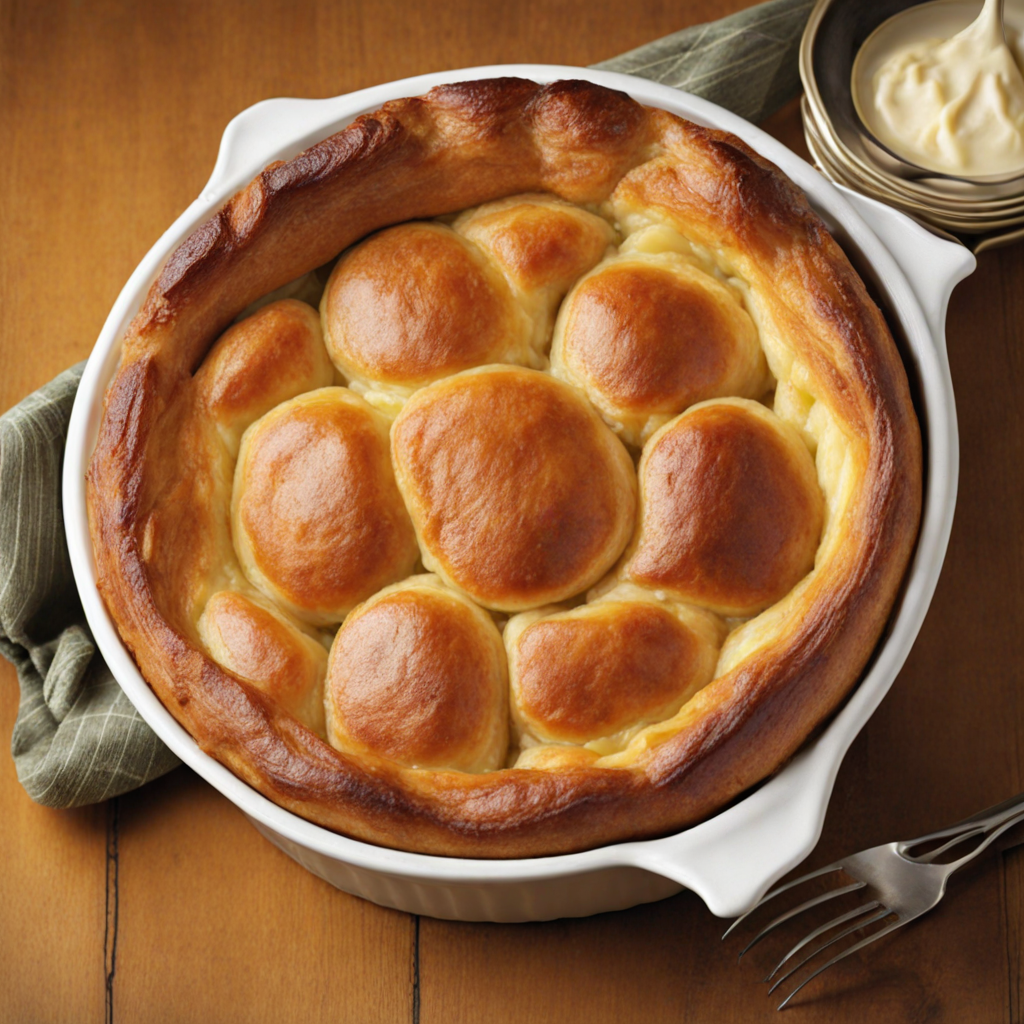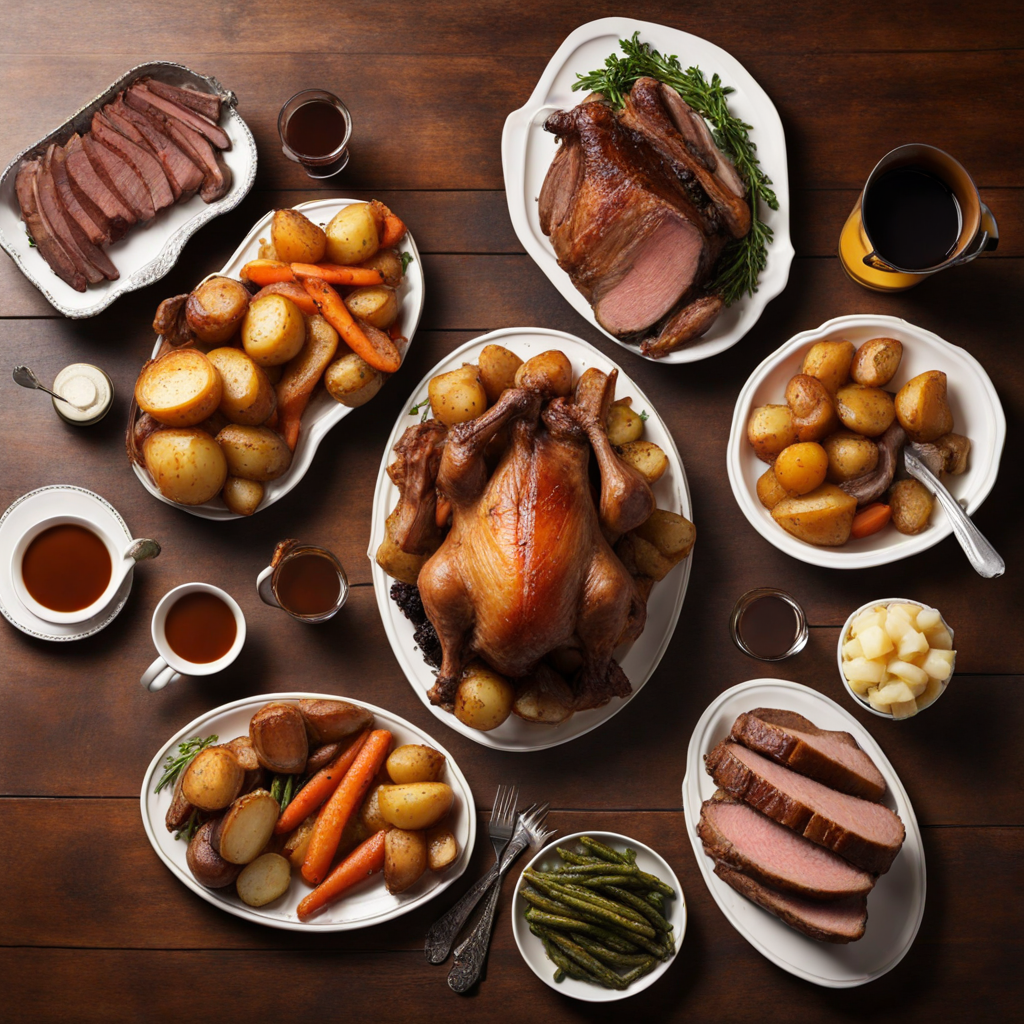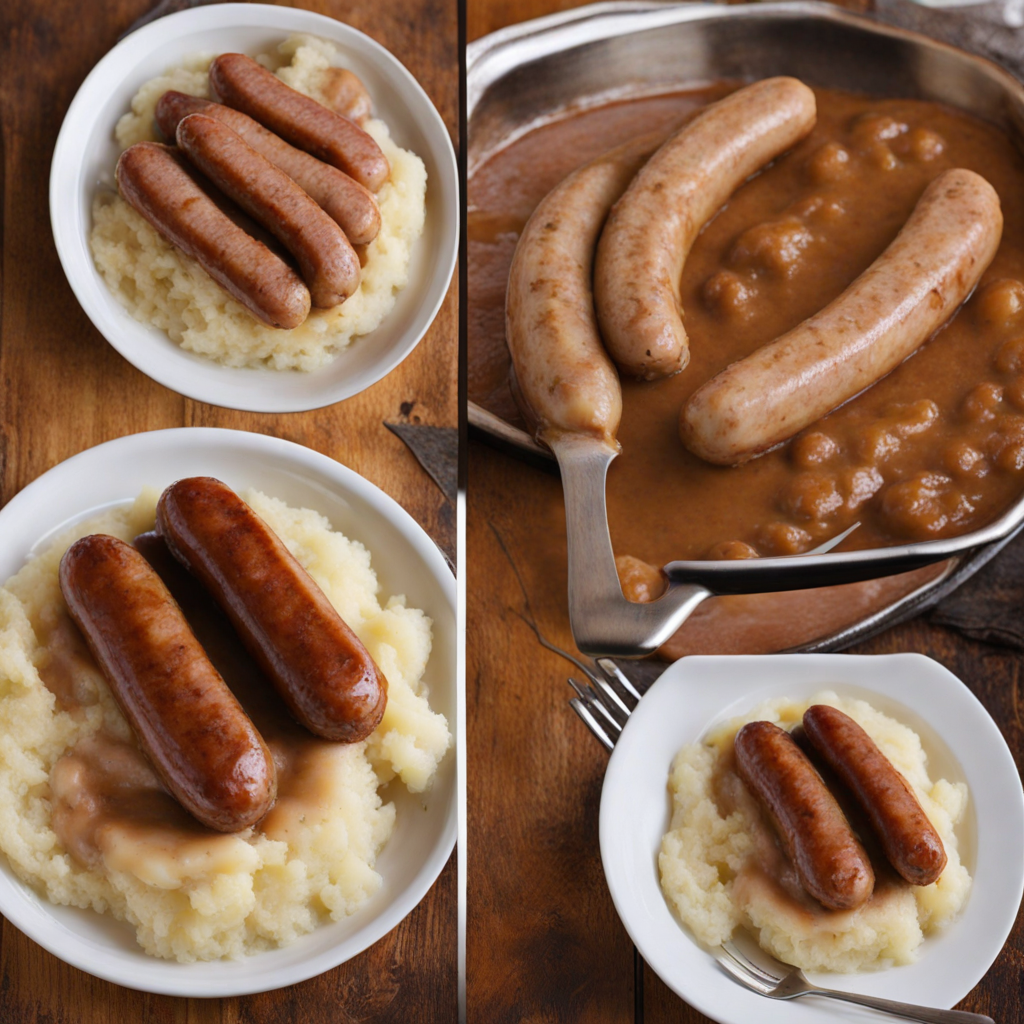Raspberry Cranachan
Raspberry Cranachan is a delightful Scottish dessert that beautifully marries the tartness of fresh raspberries with the creaminess of whipped cream and the nutty crunch of toasted oats. Traditionally served in a glass, this layered dessert showcases vibrant red raspberries that offer a burst of flavor in every spoonful. The berries are typically macerated with a hint of sugar and sometimes a splash of whisky, enhancing their natural sweetness and providing a warm depth that perfectly complements the other components of the dish. At the heart of Raspberry Cranachan is the creamy mixture made from whipped double cream, often enriched with a touch of honey or whisky, which adds a luxurious texture and a fragrant aroma. The cream is folded with the toasted oats, which have been lightly roasted to bring out their nutty flavor and crunchy texture. This combination creates a rich, satisfying base that contrasts beautifully with the bright, juicy raspberries, making each bite a harmonious blend of flavors and textures. To finish, Raspberry Cranachan is typically garnished with a few whole raspberries and a sprinkle of additional toasted oats or even a mint leaf for a pop of color. The result is not only a feast for the taste buds but also a visual delight, inviting you to indulge in its layers of flavor. This dessert is perfect for special occasions or a refreshing treat during the summer months, and once you experience its unique taste, it’s sure to become a cherished favorite.
How It Became This Dish
The History of Raspberry Cranachan: A Culinary Journey Through Scotland Origin and Early Beginnings Raspberry cranachan is a traditional Scottish dessert that beautifully encapsulates the rich agricultural heritage of Scotland. Its roots can be traced back to the 14th century, where it was originally known as "crowdie," a simple dish made from fresh sheep's milk cheese mixed with oats, honey, and berries. The word “cranachan” is believed to have derived from the Scots Gaelic term “creagan,” which means “to mix,” reflecting the dish's essence of blending various ingredients to create a delightful symphony of flavors. Historically, cranachan was a celebratory dish, often served at gatherings and special occasions. The combination of local ingredients such as oats, honey, and berries made it a staple for the Scottish Highlanders, who relied on the bounty of their land. The use of raspberries, in particular, became prominent in the 18th century as cultivation techniques improved, allowing for a more consistent and abundant harvest. Cultural Significance Cranachan is more than just a dessert; it is a representation of Scottish identity and culture. The dish is often associated with traditional Scottish festivities, including weddings and harvest celebrations. It reflects the values of community and sharing, as families would come together to enjoy this delicious treat, highlighting the importance of local produce and culinary traditions. The ingredients of cranachan—oats, raspberries, honey, and cream—are emblematic of the Scottish landscape. Oats have been a staple food in Scotland for centuries, valued for their nutritional benefits and ability to thrive in the cool climate. Raspberries, native to Europe, flourished in the wild and were foraged by locals before being cultivated in gardens. Honey, sourced from the hard work of bees, adds a touch of sweetness that balances the tartness of the berries. Finally, the addition of cream, particularly whipped cream, elevates the dish, making it a luxurious treat that celebrates Scotland's dairy farming heritage. Development Over Time The evolution of raspberry cranachan reflects broader changes in Scottish cuisine. In the 19th century, as the Industrial Revolution transformed food production and consumption, cranachan began to adapt. The introduction of whipped cream allowed for a richer texture, and as sugar became more accessible, the sweetness of the dish intensified. These changes made cranachan not only a festive dish but also a popular choice in restaurants and tea rooms throughout Scotland. In the 20th century, cranachan gained further recognition as a symbol of Scottish gastronomy. The rise of the slow food movement and a renewed interest in local, seasonal ingredients led to a resurgence of traditional dishes like cranachan. Chefs began to experiment with the recipe, introducing variations that incorporated other berries, such as blueberries or strawberries, while maintaining the essential elements of oats, honey, and cream. Today, raspberry cranachan is celebrated both in Scotland and beyond. It is often featured in Scottish cookbooks, food festivals, and culinary events, showcasing the importance of preserving traditional recipes while embracing innovation. The dish has also found its way into international cuisine, with variations appearing on menus in upscale restaurants around the world. Modern Interpretations The contemporary version of raspberry cranachan typically consists of layers of whipped cream, toasted oats, fresh raspberries, and a drizzle of honey, all presented in a glass for visual appeal. Some chefs add a splash of whisky, which not only enhances the flavor but also ties the dish to Scotland's renowned whisky culture. Others have experimented with alternative sweeteners, such as maple syrup or agave nectar, to cater to modern dietary preferences. Raspberry cranachan is also often served during special occasions, particularly at Hogmanay (New Year's Eve) and Burns Night, a celebration of the poet Robert Burns. The dish's versatility allows it to be enjoyed as a light dessert or a decadent breakfast, proving its adaptability to various culinary contexts. Conclusion The history of raspberry cranachan is a testament to Scotland's rich agricultural heritage and culinary traditions. From its humble beginnings as a simple mixture of oats and berries to its status as a beloved dessert, cranachan has evolved while remaining true to its roots. It embodies the spirit of Scottish hospitality, bringing people together to celebrate the flavors of their land. As we savor this delightful dessert today, we not only enjoy its luscious taste but also partake in a centuries-old tradition that honors the natural bounty of Scotland. Raspberry cranachan stands as a delicious reminder of the importance of local ingredients, community, and the joyous moments that food can create. Whether enjoyed in a cozy Highland cottage or a bustling city restaurant, cranachan continues to be a symbol of Scottish culture, inviting everyone to indulge in its sweet, creamy goodness.
You may like
Discover local flavors from United Kingdom


